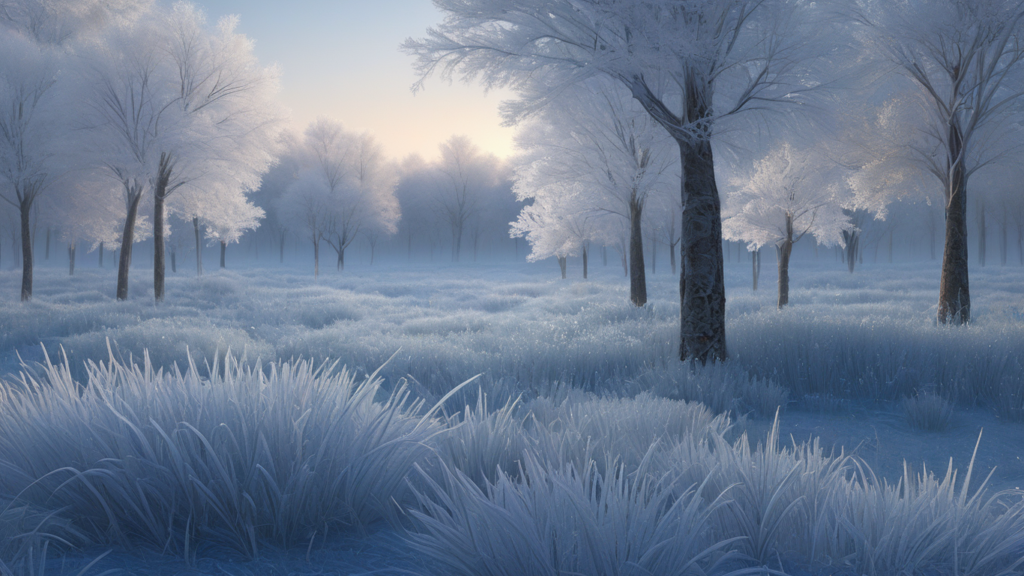
Identify the First and Last Frost of the Season
Frost is a natural phenomenon that occurs when temperatures drop below freezing, causing water vapor in the air to condense and form ice crystals on surfaces. For gardeners, farmers, and outdoor enthusiasts, knowing when the first and last frosts of the season will occur is crucial for planning and preparation. In this article, we’ll explore how to identify the first and last frosts, why it’s important, and how to prepare accordingly.
Understanding the First Frost
The first frost of the season marks the end of the growing season and the beginning of colder temperatures. Several factors influence when the first frost will occur, including geographical location, elevation, and atmospheric conditions.
Recognizing Signs of the First Frost
One of the most obvious signs of an impending first frost is a significant drop in temperature. As autumn progresses, nights become cooler, and the risk of frost increases. Paying attention to weather forecasts and observing changes in plant behavior can also help predict when the first frost will occur.
Importance of Knowing the First Frost
Understanding when the first frost will hit is essential for agricultural planning and gardening. Farmers need to harvest crops before they are damaged by frost, while gardeners may need to protect sensitive plants or bring them indoors to prevent frost damage.
Tools for Predicting the First Frost
Several tools can help predict when the first frost will occur. Weather forecasts often include frost advisories and warnings, providing valuable information for farmers and gardeners. Additionally, historical weather data can help identify patterns and trends, allowing for more accurate predictions.
Preparing for the First Frost
To minimize the impact of the first frost, it’s essential to take proactive measures to protect plants and outdoor plumbing. Covering sensitive plants with blankets or plastic sheeting can help insulate them from frost damage, while insulating outdoor plumbing can prevent pipes from freezing and bursting.
Understanding the Last Frost
The last frost of the season signifies the end of winter and the beginning of warmer temperatures. While similar to the first frost in many ways, the last frost typically occurs later in the spring and has different implications for plant growth and development.
Recognizing Signs of the Last Frost
As temperatures begin to warm up in the spring, the risk of frost decreases. Longer daylight hours and milder nighttime temperatures are indicators that the last frost is approaching. Gardeners can start transitioning plants outdoors and preparing for the growing season ahead.
Importance of Knowing the Last Frost
Knowing when the last frost will occur is crucial for gardeners planning their spring planting schedule. Planting too early can expose tender seedlings to frost damage, while waiting too long can delay the start of the growing season.
Tools for Predicting the Last Frost
Similar to predicting the first frost, several tools can help forecast when the last frost will occur. Almanacs and online resources provide valuable information on average frost dates based on historical data and meteorological trends.
Preparing for the Last Frost
To ensure a successful transition to spring gardening, it’s essential to prepare for the last frost by gradually reintroducing plants outdoors and monitoring weather patterns closely. Keeping an eye on nighttime temperatures and protecting tender seedlings can help prevent frost damage and ensure a bountiful harvest.
Conclusion
Identifying the first and last frosts of the season is crucial for farmers, gardeners, and outdoor enthusiasts alike. By understanding the signs of frost, utilizing predictive tools, and taking proactive measures to protect plants and outdoor infrastructure, individuals can minimize the impact of frost and maximize the success of their gardening and agricultural endeavors.
FAQs
- How can I tell if a frost is coming?
- Keep an eye on weather forecasts for frost advisories and warnings. Look for signs of dropping temperatures and changes in plant behavior.
- What temperature is considered a frost?
- Generally, temperatures below 32°F (0°C) can lead to frost formation, but factors such as humidity and wind speed can influence the onset and severity of frost.
- Can frost damage be prevented?
- Yes, by taking proactive measures such as covering sensitive plants, insulating outdoor plumbing, and monitoring weather patterns, you can minimize the risk of frost damage.
- How do I know when it’s safe to plant after the last frost?
- Consult local gardening resources or use online tools to determine the average last frost date for your area. Wait until after this date to plant tender seedlings outdoors.
- What should I do if my plants are damaged by frost?
- If your plants are affected by frost, carefully remove any damaged foliage and provide extra care, such as watering and fertilizing, to help them recover.
